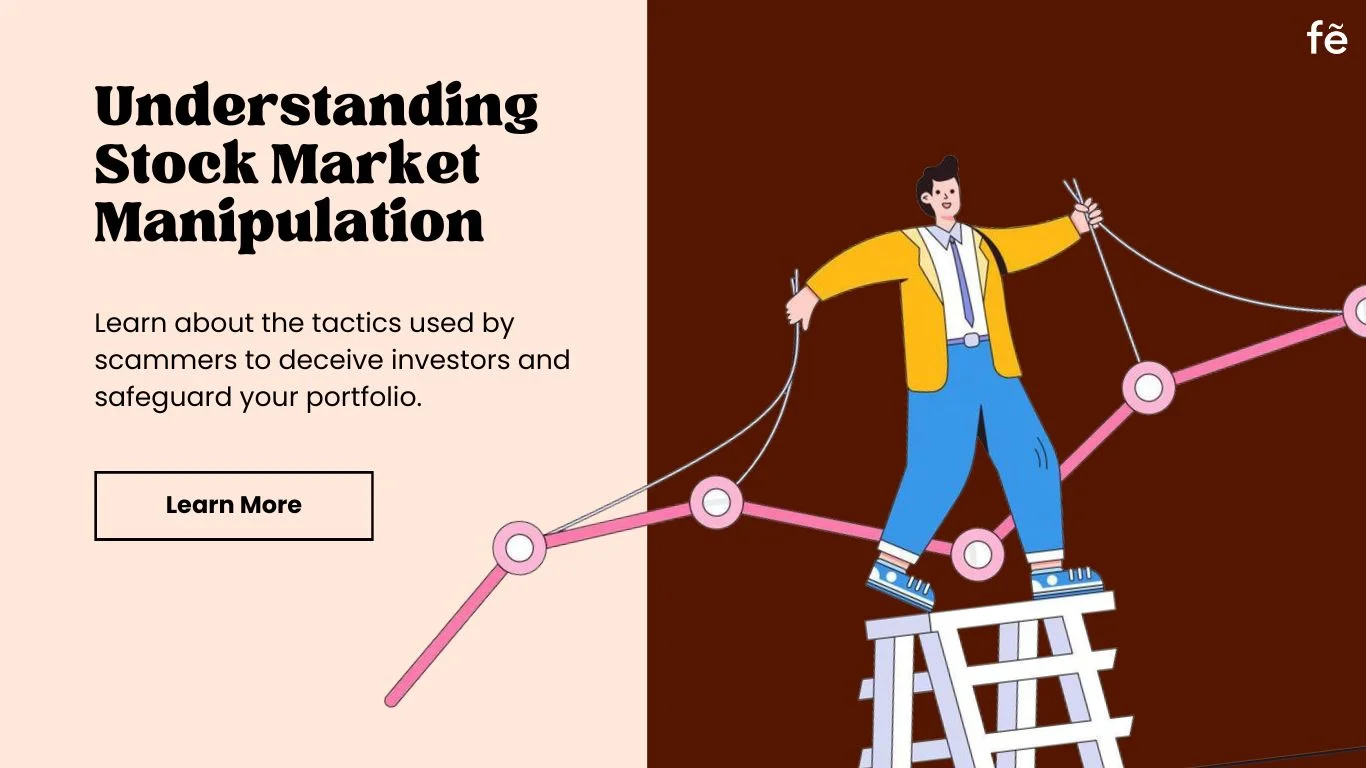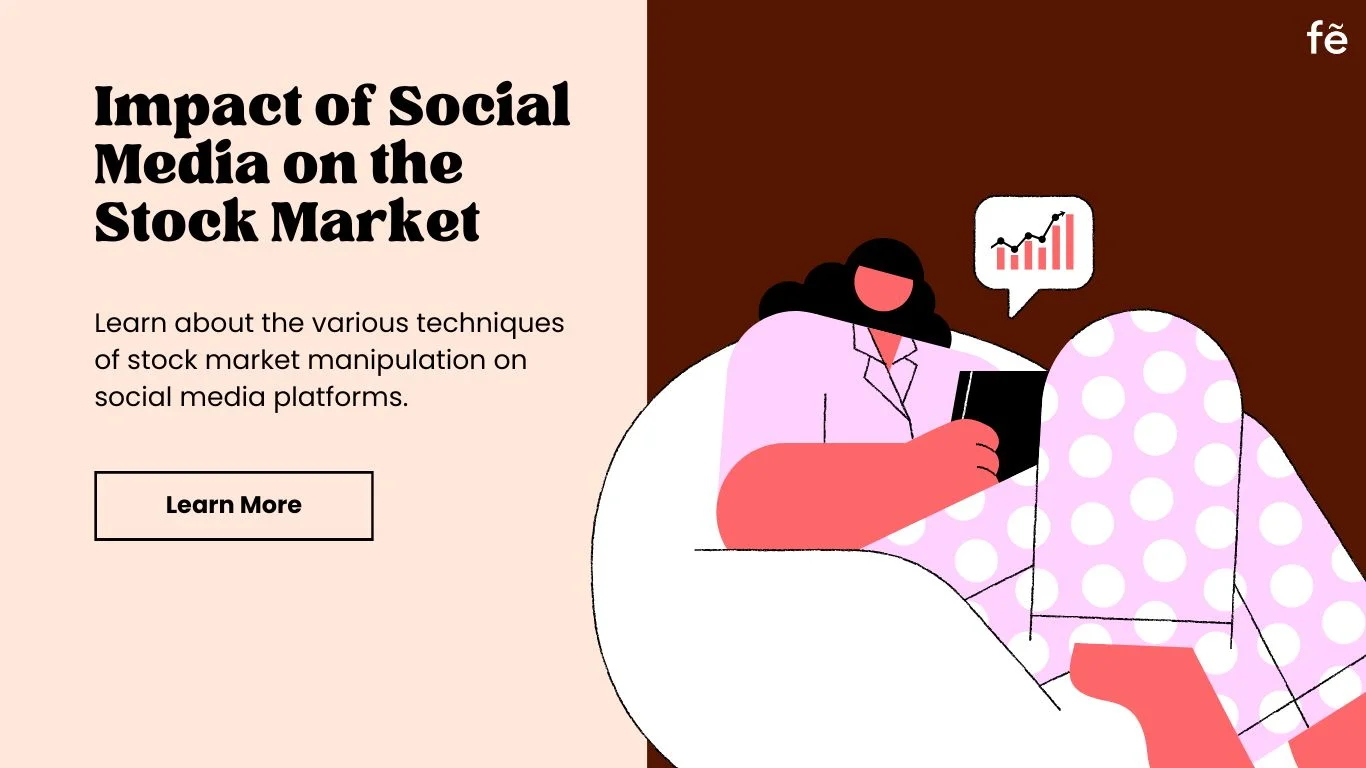
In the past, the stock market was often associated with betting or gambling, but with the rise of accessible financial education in the digital era, this perception is gradually shifting. However, it's essential to acknowledge that the skepticism of the past wasn't entirely wrong. Certain individuals manipulate the stock market, creating a volatile environment that leads to significant losses for many.
Let's understand with an example, Enron Corporation in 2001, where stock manipulation caused a staggering 90% drop in stock prices, almost reducing them to zero. The impact on investors was devastating.
In 2013, the Securities and Exchange Commission (SEC) conducted a survey, revealing that similar manipulations were costing investors an annual sum ranging from $100 billion to $300 billion. To mitigate these losses, you have to know the methods of manipulation, identify them in advance and stay away from them.
This blog aims to shed light on the tactics employed by these malicious people to manipulate the stock market. By learning about these methods, you'll be better equipped to protect yourself and avoid falling victim to their schemes.
Types of Stock Market Manipulation
1. Pump and Dump Schemes
Pump and Dump schemes are an age-old tactic employed by manipulators to artificially inflate the price of a stock by buying large quantities and then selling it off at a profit, leaving unsuspecting investors holding the bag. These scammers spread positive or negative, often misleading, information about the stock through various means, creating a buying frenzy. Once the price reaches a peak, they swiftly sell their shares, causing the price to crash.
A real-life example of this is Theranos Inc, founded in 2003. This health technology company employed a deceptive tactic to inflate its share price. It propagated false information claiming to have developed a groundbreaking blood testing technology capable of conducting tests with minimal blood samples. However, it was later exposed that these claims were entirely faked.
Related Post: History of the Stock Market: From Its Origins to Today
2. Insider Trading
Imagine you and your friends are playing a game together, and one of your friends knows a secret about what's going to happen next in the game. Now, this friend starts telling others about the secret before the game reveals it to everyone. That wouldn't be fair, right? That's similar to what insider trading is, but instead of a game, it happens in the stock market.
This is especially done by those people who are associated with the company, such as an employee of the company.
They find out that the company is going to announce big, positive news like a new product launch or a huge increase in profits. If that person uses this secret information to buy shares of the company's stock before the news is made public, they can make a lot of money when the stock price goes up after the announcement. This might seem like a clever way to make easy money, but it's against the rules and illegal.
Insider trading is considered wrong because it gives some people an unfair advantage over others who don't have access to the same secret information. That's why there are strict laws against insider trading to protect investors and ensure that the stock market works in a fair and transparent way for everyone.
3. Spoofing and Wash Trading
Spoofing and wash trading are manipulative tactics that involve placing fake orders to deceive other investors about the stock's demand and supply dynamics. Spoofers create the illusion of strong buying or selling activity to influence stock prices. Wash traders create artificial trading volume by simultaneously buying and selling the same share, creating a false impression of market activity.
These types of trading are done to make it seem like there's a lot of interest in a particular stock, but it's all an illusion. The goal is to attract other investors who see the high trading activity and think it's a popular stock to buy. But in reality, there's no real demand for the stock, and it's just the same traders trading with themselves.
In both cases, spoofing and wash trading, people are trying to trick others for their gain, and that's why don’t trade in any stock just by looking at the market volume or just by the label of the popular stock, it can cause you huge losses.
4. Using Social Media and Paid Advertising
Imagine you have a YouTube channel where you review video games and lots of people watch your videos and trust your opinions. Now, one big video game company pays you a lot of money to say their new game is the best ever, even if it's not true. They want you to convince your followers to buy the game and make it seem super popular.
In the stock market, something similar can happen with social media and paid advertising. Companies or individuals might try to manipulate stock prices by using these platforms to spread misleading or false information about a particular stock. Here's how it works:
Social Media Manipulation: Someone might post on social media platforms like Facebook, Twitter, Reddit, or Instagram, pretending to be an ordinary person who has inside information about a company. They might say things like, "I heard this company is going to make a groundbreaking announcement soon, and their stock will skyrocket!"
People who see these posts might get excited and start buying the stock, thinking they're getting in on a great opportunity. But the truth is, the person who posted the information might have no real inside knowledge at all. They might be trying to trick others into buying the stock so its price goes up.
Want to learn more about, How social media influences the stock market? Check out our blog: The Impact of Social Media on the Stock Market.
Paid Advertising: In some cases, companies themselves might use paid advertising to make their stock look better than it actually is. They might pay for ads that exaggerate their company's success or future prospects. These ads can show up on websites, social media, or even on TV.
When people see these ads, they might believe the company is doing fantastic, and more people might start buying the stock. However, the reality might be very different, and the company might not be as successful as the ads make it seem.
Both social media manipulation and paid advertising can influence how people perceive a stock and can create artificial demand. As more people rush to buy the stock based on misleading information, its price goes up. This can be profitable for those who manipulated the situation, as they can sell their stocks at the inflated price and make a quick profit.
So, it's essential for you to be cautious when investing and to do your research from reliable sources before making any decisions based on what you see on social media or in advertisements.
5. Algorithmic Trading
Algorithms, the superheroes of modern finance, can also be villains when manipulated. It is actually a virtual robot or program that mainly know as an algorithmic trader. It can analyze lots of information from the stock market in just a fraction of a second. It looks at things like price movements, trading volume, and news about companies to make its decisions.
An algorithmic trader can buy and sell stocks automatically based on specific rules and patterns it has been programmed to follow. So some people use algorithmic trading to try to manipulate stock prices by creating fake demand and spoofing.
Now, it's important to note that not all algorithmic trading is manipulative. Many traders and financial institutions use algorithmic trading for legitimate purposes, like quickly executing large orders or managing their investments more efficiently.
6. Market Cornering
The idea of buying up almost all shares of any particular company to control the supply and manipulate the price is known as market cornering manipulation.
In the stock market, cornering manipulation happens when someone or a group of people buy a large majority of the shares of a particular company's stock. By doing this, they gain significant control over the supply of that stock.
Market cornering is considered illegal because It gives the manipulators an unfair advantage and can disrupt the natural balance of the stock market.
Related Post: Top 5 Free Websites For Analyzing Indian Stocks
7. Short and Distort Technique
"Short and Distort" is a cunning strategy where someone borrows and sells shares of a company's stock, then spreads false information to drive the stock price down. The aim is to profit from the situation by repurchasing the shares at a lower cost and returning them to the original owner.
This practice is widely considered unethical and illegal since it involves the intentional spread of false information to manipulate the stock market and inflict damage on a company's reputation.
Conclusion
In addition to the techniques mentioned earlier, there exist numerous other methods through which individuals can manipulate the stock market, such as Window Dressing, Front-Running, Painting the Tape, and more.
However, I have elaborated on the most popular methods for a comprehensive understanding. One common factor that underlies all these manipulations is the interplay of demand and supply. By spreading positive or negative information about a company, manipulators influence the popularity of its stock, leading to price fluctuations that they exploit for profit.
Recognizing this foundational aspect is crucial. To safeguard against such manipulations, always remain attentive to the financial and fundamental performance of a company. Practicing value investing, which involves purchasing stocks below their intrinsic value and holding them for the long term, can be a wise approach to mitigate the risks posed by market manipulations.





